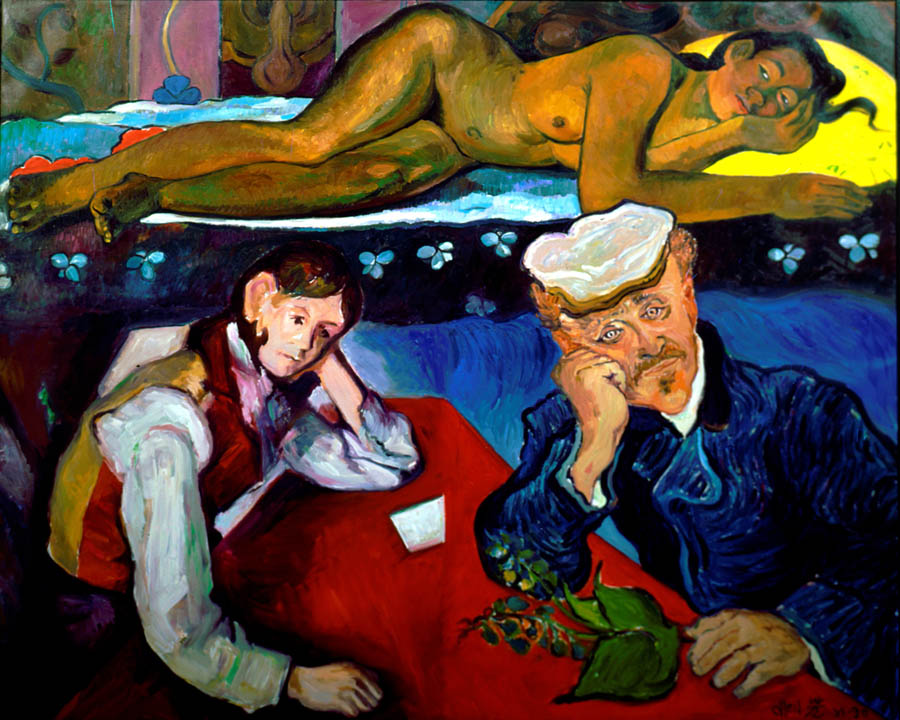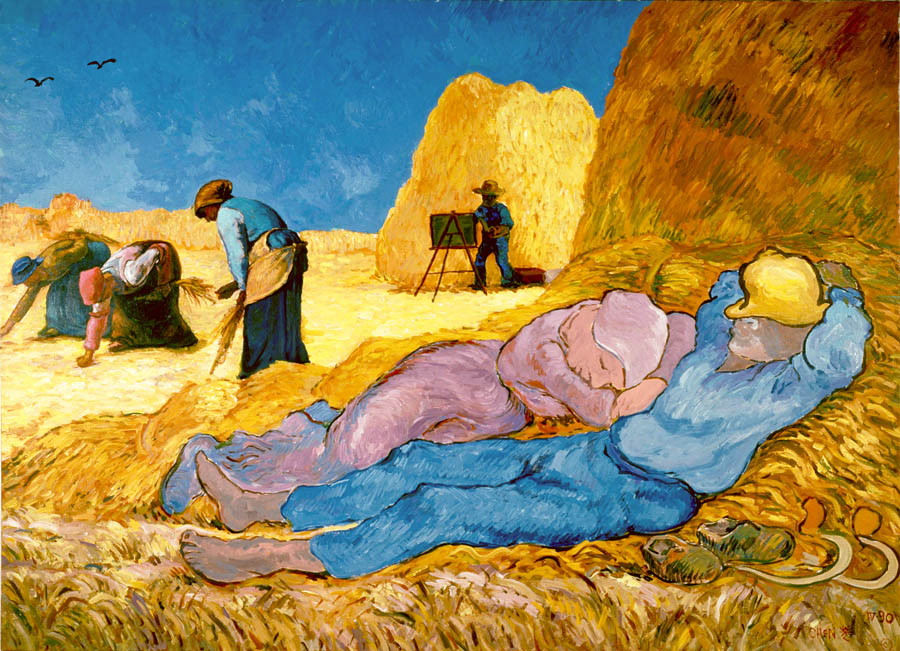
Golden Triangle of Post-Impressionism
Paul Cezanne, Vincent van Gogh, and Paul Gauguin are universally regarded as the three masters of Post-Impressionism, each in his own grandiose style and expression. Cezanne’s art stands out with his geometric serenity of structure. With firm, solid brushstrokes, he captured form and value with color, digging out the inner order of nature in its essence. With bright, yet earth-toned colors, Cezanne constructed space in two-dimensions. He was fond of the intellectual analysis of forms, arranging them in an organic color harmony. The psychology of Cezanne’s figures mattered little, he was not interested in their thoughts nor their emotions, but in their form. “I want to astonish Paris with an apple,” he stated. Van Gogh, on the other hand, liked to express human emotions and passions: love, hatred, despair, hope, suffering, desire, longing for eternity and for God. He once said, “I have sought to paint with red and green the terrible human passions.” To Van Gogh, nature pulses, forms swell and crackle, trees twist like flames, nebulae unfurl. He sought to directly impact human emotion, sometime creating shock by his employment of intense tones. He believed in the primary importance of color to express the state of mind that the model represented. With color, Van Gogh tried to convey the inner vitality of the objects, of the scenes he depicted. With particular contorted touches and short winding lines, Van Gogh strived to express the psychology of the figures as well as the landscapes. Physiognomy was but a pretext, Van Gogh tried to catch the light, soul, and God-image beyond the appearances before him. As for Gauguin, his exotic, poetic subject matter and his nostalgic, dreamy, symbolic themes made him a master of imagination. Gauguin was a civilized primitive, or a wild European, longing for an escape to the garden of Eden, “an escape to the woods of an island in the South Seas, (to) live there in ecstasy, calm, and art.” An intellectual primitive, Gauguin painted with instinct as well as theory. He loved colors and arabesque decorativeness; he tried to use them to construct an Eden of exotic grandeur and mystical simplicity in a wild harmony, sometimes pushing towards abstraction. Gauguin designed his color areas with disregard for the conventions of realism. His values were the psychological impact of color, the orchestration of rich tones echoing in correspondence — which evoke with unparalleled freshness, the feeling of Paradise. In this three-in-one Post-Impressionist painting, Chen selected three icons from those three grand masters and constructed them in a pyramid shape. Cezanne’s “Young Man with Red Jacket” (1890-95) on the left-hand side, Van Gogh’s “Dr. Paul Gachet” (1890) on the right-hand side, and above them, lying on the bed, is Gauguin’s “O. Taiti (Nevermore)” (1897), immobile, naked, with open eyes, an antique beauty, an exotic girl, an immemorial youth of nature. These three familiar figures from European art history differ in color: Cezanne’s young man is in white and red, Van Gogh’s Dr. Gachet, in ultramarine blue, and Gauguin’s lady is golden brown. They are pulled together by the strong red color of the pyramid shape in the center of the painting, which is originally the extension of Dr. Gachet’s table on which he rests his right elbow and left hand. This red color, while intensifying the three figures, unifies them with its commending power of the pigment. There is another element quite central to the whole balance and harmony of the artwork — the white spot upon the red table. It exists already in Cezanne’s original work, but Chen reshaped the rectangle and saturated the white to coordinate it with the rest of the painting. It reflects the boy’s white shirt as well as Dr. Gachet’s cap and collar, along with Gauguin’s white bed sheet and the silvery nackles upon the bed. This white shape upon the red table carries the painting’s center point. Even though these three subjects were borne from different masters and in different styles and expressions, we find a unity in them, due in part to the similar positions of their hands. Cezanne’s young man and Dr. Gachet, both rest their heads upon their elbows (though in opposition) with another hand on the table. As for Gauguin’s declining lady, she rests her head on her left palm while her other arm lies in a 90-degree angle. These three grand masters naturally form a golden triangle in art history, bearing its suggestion in the geography of the Golden Triangle in South East Asia. In the art market recently, Van Gogh’s “Dr. Paul Gachet” (another version) broke historical records with the high price it procured at an international auction. Imagine, one masterpiece from Van Gogh is valued at more than $80 million, if we add a Cezanne and a Gauguin, how much would it be then?
– T. F. and Julie Chen |
Golden Triangle of Post-Impressionism

Merry Christmas, Van Gogh
2015 年 8 月 11 日

